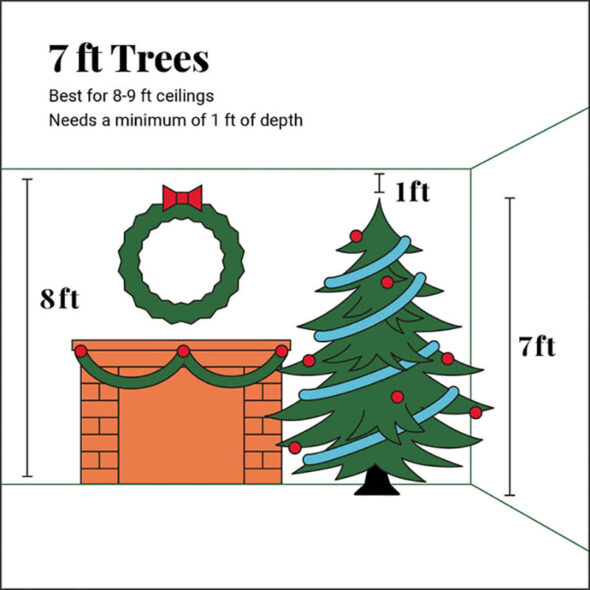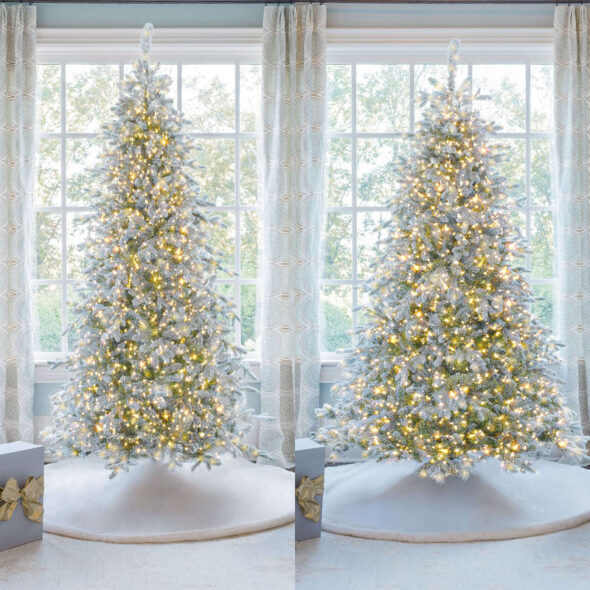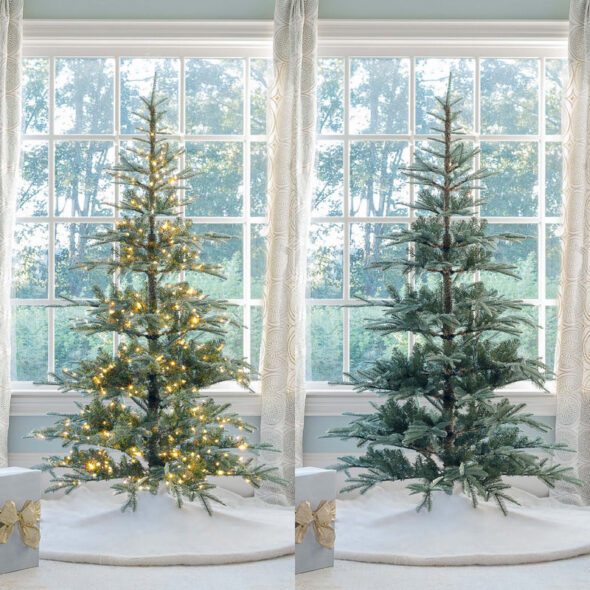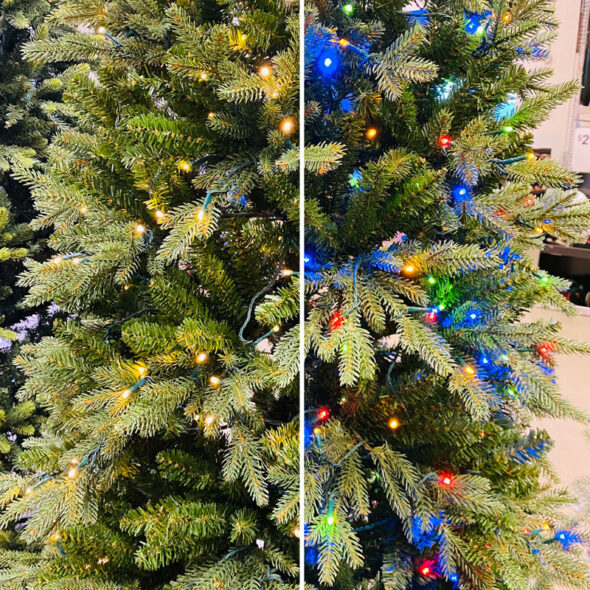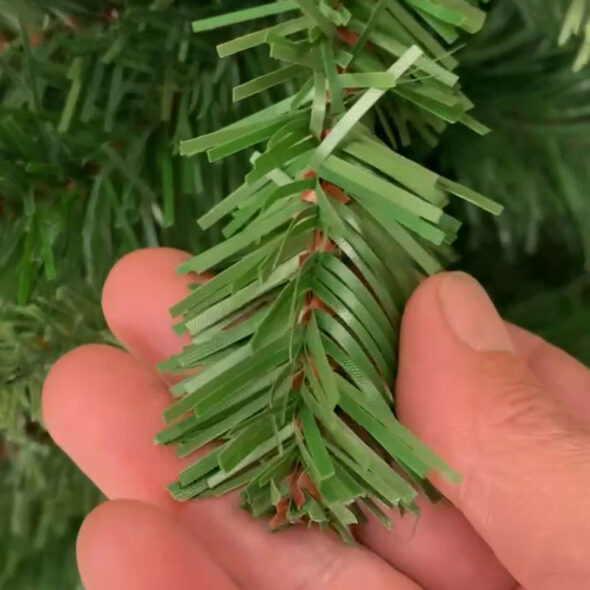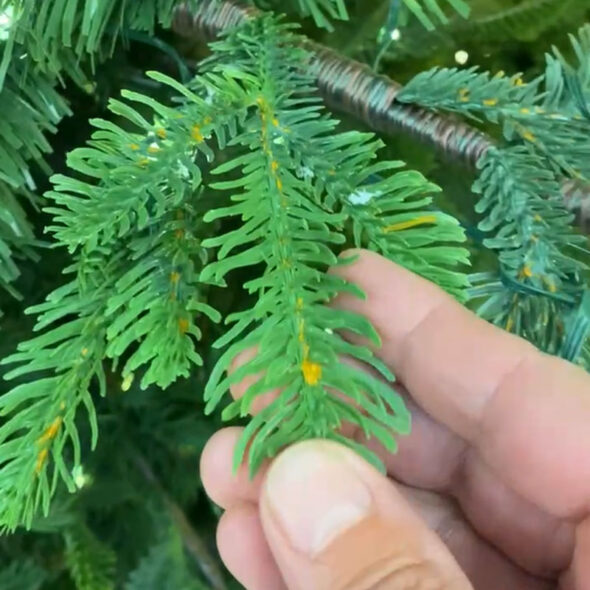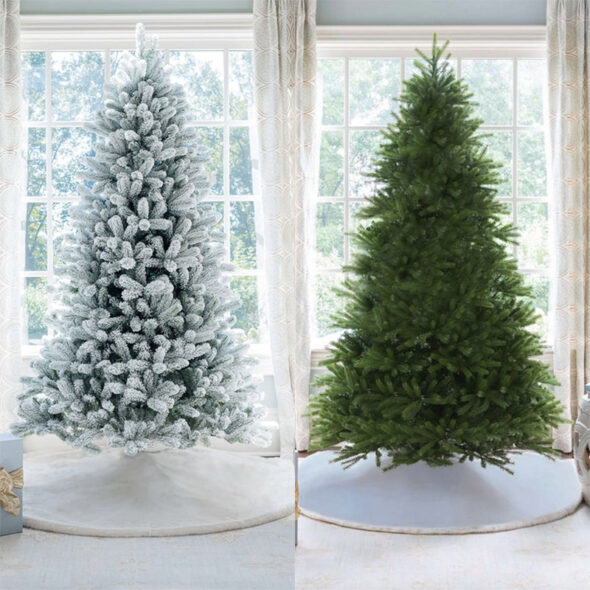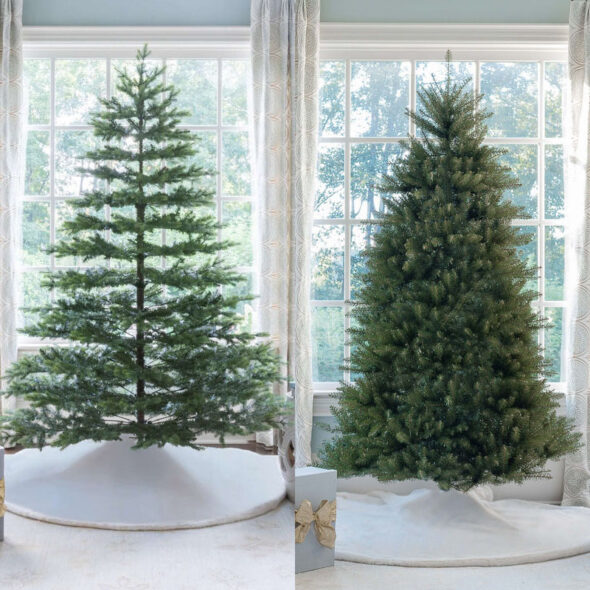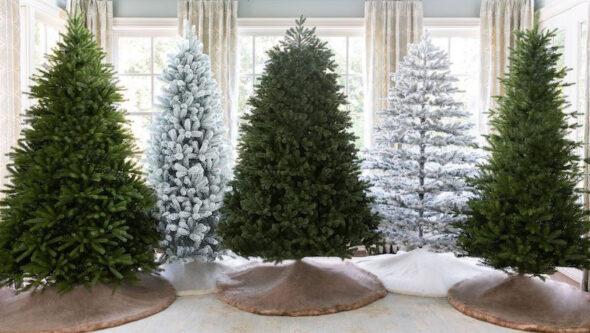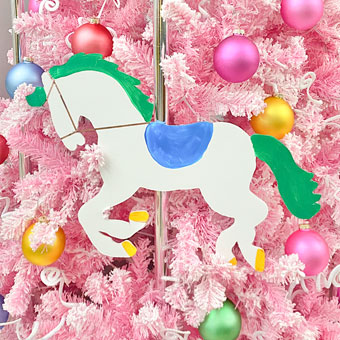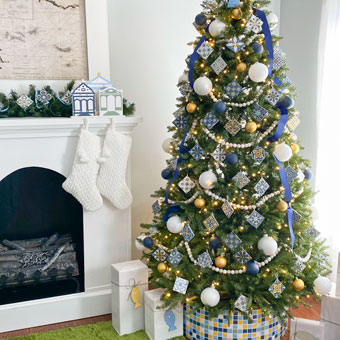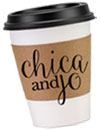Tips for Choosing an Artificial Christmas Tree
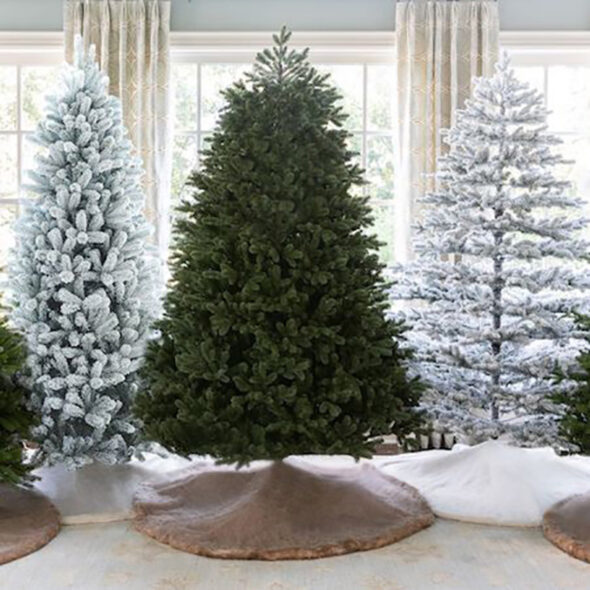
You've already made one decision about your Christmas tree if you are here — you want an artificial one over a real one. There are many options, but how do you narrow it down to the perfect selection for you? I'm going to step you through a few of the things you should consider before buying an artificial Christmas tree.
Selecting the right artificial tree means choosing the right size, lighting options, power considerations, and tree variety. We have tips for all these areas, so you can make sure you invest your money wisely on an artificial Christmas tree that you will be able to enjoy for years to come.
Selecting the right size of artificial tree
The size of your artificial tree should be the very first thing you determine, and it will be based on where it's going in your home. Once you pick where your Christmas tree will be set up, measure the ceiling height in that space. You will need at least 12 inches of space between the top of your tree and your ceiling.
If you have a very large tree topper, take that into consideration when determining your tree height. You should also note that the height of an artificial tree typically does include the height of the tree stand that comes with it.
The most common size is a 7 or 7.5 foot tree which will fit average 8- or 9-foot ceilings. There's no rule saying how short you can go but remember scale — a 6 foot tree might to look out of place in a room with soaring 18 foot ceilings.
Artificial trees also come in many different widths, from slim pencil trees to fuller options. Ideally, you will want your tree to be about 6 inches away from the wall so the branches aren't squished. And be sure you allow plenty of room for walking around the tree.
Slim artificial trees measure about 40 - 47 inches in diameter, but fuller tree options are typically about 50" or more in diameter, and an go as wide as 64" with some varieties.
Lighting options for artificial trees
Should you get a pre-lit or unlit tree?
Untangling a strand of lights may seem like a standard Christmas activity, but opting for a pre-lit Christmas tree can make those struggles a thing of Christmas past. Pre-lit trees are a lot more expensive than their unlit counter-parts, but it can be worth it in time savings.
If you choose a prelit artificial tree, look for one that is labeled "continuous on" or "with burn-out protection." This means that if a single bulb on the strand burns out, the rest of the lights stay on and you aren't left with a large chunk of dark tree.
Trees with multi-color or white lights
Choosing between white or multi-colored lights can be daunting decision because it can lock you in to decorating choices for years to come. But maybe not! With the latest LED technology being built into so many pre-lit trees these days, you can often find trees with lights that can do both white AND multi-color. A simple toggle of the switch or remote can transform the same tree from white to multi to suit your whim each year.
And remember, just because your pre-lit tree already comes with lights, it doesn't mean you can't add more! If you choose a white light tree but want colors one year, just add a few strands of multi-colored lights (even in a different bulb shape) to add lots of fun dimension to your tree and of course, add even more magical glow.
Power connections and controls
When you connect the pieces of your pre-lit tree together, you'll need to also connect the wires of the light strands. That is, unless you choose a King of Christmas pre-lit tree with Power Pole Technology. The power on these trees runs through the pole, so the lights automatically connect when you put the pieces into the pole. No need to hunt down the ends of the wires!
For turning the lights on and off, look for trees with a foot pedal and/or remote control. These features make it so much easier to turn the lights on without having to use long extension cords or crawl behind your tree to reach the plug. These remote options can be essential features for those with limited mobility.
Extra lighting effects
Be sure to check out the extra lighting features many trees offer as well. Some will have a foot pedal or remote that allows you to switch between different lighting settings such as a glowing fade effect or steady twinkle. It's great to have options to give you flexibility on how your tree looks each year (or each day!)
Branch type considerations for artificial trees
The difference between PVC (classic) or PE (realistic) branch tips
You've probably noticed that some trees look more realistic than others, but it might be hard to know why that's the case. If often comes down to the material used for the branch tips of the tree, which are made of either PVC or PE.
Classic PVC needles are made from flat strips of PVC that are cut or shredded to closely mimic true tree foliage. From a distance, they look very realistic and can be hard to distinguish from PE tips, but up close they will look more artificial. The biggest benefit of PVC tips is the lower price point.
Realistic PE needles are made of PE and are three-dimensional, resulting in more life-like appearance than your average flat PVC needles. The higher quality of these branches means the tree will have a higher cost, but they are so realistic that your guests will have to look really closely to see if your tree is fake or real.
Many artificial trees actually have a combination of the two types of needles, using the PE on the outer tips and the PVC inside the tree for added fullness. This combo can relax the price point and giving you the best of both worlds.
Choosing between flocked or plain trees
Most people think of the traditional green trees when you think of Christmas. They are beautiful and classic for a reason and they will go with any home's aesthetic. You can easily change them up from year to year to match your decor, or move them from room to room and they will always look right at home.
Flocked trees, however, have been enjoying a moment over the last few years. They look like you just brought them in from the snowy forest. The only problem with flocked trees is that you will have some extra cleanup after setting up the tree, but the flocking adds so much extra dimension and a sense of winter wonderland to your decor. Just remember that you can’t unflock a tree, so if you think you won’t like it next year, maybe choose a plain style instead.
Trees with closely spaced or open branches
Recently, there have been a lot more options on the market for artificial trees with limbs placed further apart and a visible trunk. One of the main benefits of this style is that the extra spaces means you can truly showcase ornaments on your tree. This type is ideal for someone with either a minimal aesthetic or a curated collection of clear or shiny ornaments that look best when there's plenty of space around them or light shining through.
More traditional trees are much fuller and once fluffed out, you should not be able to see the trunk in the middle. This type of tree will glow more because there are more lights and they can be spread throughout the tree for more depth. There's a lot more fluffing involved with this style but you can't beat the voluptuous, classic look.
Choosing between fir, spruce, or pine trees
There are many different varieties of artificial trees, but most fall into the categories of fir, spruce, or pine. Each has characteristics that make it stand out and suit your style.
Fir trees typically have a bushy and full silhouette and work really well for those who want minimal ornamentation. Firs are also perfect for outdoor topiaries where you just might want lights and a simple bow.
Spruce trees are also very full trees but their branches are upturned so it makes it easy to display more ornaments. Spruces can also be found with a blue hue to them making them an interesting color backdrop for ornaments.
Pine trees have needles that grow in bundles but they tend to have fewer branches making them look a bit more sparse than firs and spruces. Pines are perfect for displaying keepsake ornaments since the extra room on the tree gives them a place to shine.




